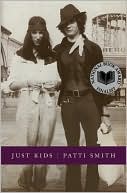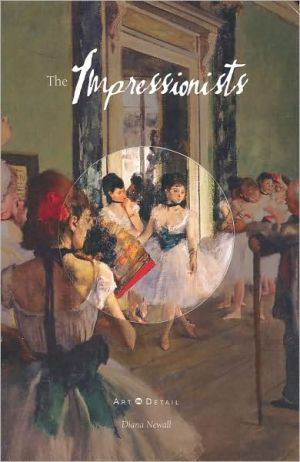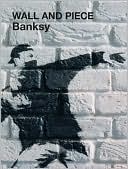The Lost Painting: The Quest for a Caravaggio Masterpiece
An Italian village on a hilltop near the Adriatic coast, a decaying palazzo facing the sea, and in the basement, cobwebbed and dusty, lit by a single bulb, an archive unknown to scholars. Here, a young graduate student from Rome, Francesca Cappelletti, makes a discovery that inspires a search for a work of art of incalculable value, a painting lost for almost two centuries.\ The artist was Caravaggio, a master of the Italian Baroque. He was a genius, a revolutionary painter, and a man beset...
Search in google:
An Italian village on a hilltop near the Adriatic coast, a decaying palazzo facing the sea, and in the basement, cobwebbed and dusty, lit by a single bulb, an archive unknown to scholars. Here, a young graduate student from Rome, Francesca Cappelletti, makes a discovery that inspires a search for a work of art of incalculable value, a painting lost for almost two centuries. The artist was Caravaggio, a master of the Italian Baroque. He was a genius, a revolutionary painter, and a man beset by personal demons. Four hundred years ago, he drank and brawled in the taverns and streets of Rome, moving from one rooming house to another, constantly in and out of jail, all the while painting works of transcendent emotional and visual power. He rose from obscurity to fame and wealth, but success didn't alter his violent temperament. His rage finally led him to commit murder, forcing him to flee Rome a hunted man. He died young, alone, and under strange circumstances. Caravaggio scholars estimate that between sixty and eighty of his works are in existence today. Many others-no one knows the precise number-have been lost to time. Somewhere, surely, a masterpiece lies forgotten in a storeroom, or in a small parish church, or hanging above a fireplace, mistaken for a mere copy. Prizewinning author Jonathan Harr embarks on an spellbinding journey to discover the long-lost painting known as The Taking of Christ-its mysterious fate and the circumstances of its disappearance have captivated Caravaggio devotees for years. After Francesca Cappelletti stumbles across a clue in that dusty archive, she tracks the painting across a continent and hundreds of years of history. But it is not until she meets Sergio Benedetti, an art restorer working in Ireland, that she finally manages to assemble all the pieces of the puzzle. Told with consummate skill by the writer of the bestselling, award-winning A Civil Action, The Lost Painting is a remarkable synthesis of history and detective story. The fascinating details of Caravaggio's strange, turbulent career and the astonishing beauty of his work come to life in these pages. Harr's account is not unlike a Caravaggio painting: vivid, deftly wrought, and enthralling. The New York Times Sunday Book Review - Bruce HandyIn truth, the book reads better than a thriller because, unlike a lot of best-selling non-fiction authors who write in a more or less novelistic vein (Harr's previous book, A Civil Action, was made into a John Travolta movie), Harr doesn't plump up his tale. He almost never foreshadows, doesn't implausibly reconstruct entire conversations and rarely throws in litanies of clearly conjectured or imagined details just for color's sake.
The Lost Painting\ \ By Jonathan Harr \ Random House\ Jonathan Harr\ All right reserved. \ ISBN: 0553714929 \ \ \ Chapter One\ Part 1\ \ THE ENGLISHMAN\ \ The Englishman moves in a slow but deliberate shuffle, knees slightly bent and feet splayed, as he crosses the piazza, heading in the direction of a restaurant named Da Fortunato. The year is 2001. The Englishman is ninety-one years old. He carries a cane, the old-fashioned kind, wooden with a hooked handle, although he does not always use it. The dome of his head, smooth as an eggshell, gleams pale in the bright midday Roman sun. He is dressed in his customary manner-a dark blue double-breasted suit, hand tailored on Savile Row more than thirty years ago, and a freshly starched white shirt with gold cuff links and a gold collar pin. His hearing is still sharp, his eyes clear and unclouded. He wears glasses, but then he has worn glasses ever since he was a child. The current pair are tortoiseshell and sit cockeyed on his face, the left earpiece broken at the joint. He has fashioned a temporary repair with tape. The lenses are smudged with his fingerprints.\ \ Da Fortunato is located on a small street, in the shadow of the Pantheon. There are tables outside, shaded by a canopy of umbrellas, but the Englishman prefers to eat inside. The owner hurries to greet him and addresses him as Sir Denis, using his English honorific. The waiters all call him Signore Mahon. He speaks to them in Italian with easy fluency, although with a distinct Etonian accent.\ \ Sir Denis takes a single glass of red wine with lunch. A waiter recommends that he try the grilled porcini mushrooms with Tuscan olive oil and sea salt, and he agrees, smiling and clapping his hands together. "It's the season!" he says in a high, bright voice to the others at his table, his guests. "They are ever so good now!"\ \ When in Rome he always eats at Da Fortunato, if not constrained by invitations to dine elsewhere. He is a man of regular habits. On his many visits to the city, he has always stayed at the Albergo del Senato, in the same corner room on the third floor, with a window that looks out over the great smoke-grayed marble portico of the Pantheon. Back home in London, he lives in the house in which he was born, a large redbrick Victorian townhouse in the quiet, orderly confines of Cadogan Square, in Belgravia. He was an only child. He has never married, and he has no direct heirs. His lovers-on this subject he is forever discreet-have long since died.\ \ Around the table, the topic of conversation is an artist who lived four hundred years ago, named Michelangelo Merisi da Caravaggio. Sir Denis has studied, nose to the canvas, magnifying glass in hand, every known work by the artist. Since the death of his rival and nemesis, the great Italian art scholar Roberto Longhi, Sir Denis has been regarded as the world's foremost authority on Caravaggio. Nowadays, younger scholars who claim the painter as their domain will challenge him on this point or that, as he himself had challenged Longhi many years ago. Even so, he is still paid handsome sums by collectors to render his opinion on the authenticity of disputed works. His verdict can mean a gain or loss of a small fortune for his clients.\ \ To his great regret, Sir Denis tells his luncheon companions, he's never had the chance to own a painting by Caravaggio. For one thing, fewer than eighty authentic Caravaggios-some would argue no more than sixty-are known to exist. Several were destroyed during World War II, and others have simply vanished over the centuries. A genuine Caravaggio rarely comes on the market.\ \ Sir Denis began buying the works of Baroque artists in the 1930s, when the ornate frames commanded higher prices at auction than the paintings themselves. Over the years he has amassed a virtual museum of seicento art in his house at Cadogan Square, seventy-nine masterpieces, works by Guercino, Guido Reni, the Carracci brothers, and Domenichino. He bought his last painting in 1964. By then, prices had begun to rise dramatically. After two centuries of disdain and neglect, the great tide of style had shifted, and before Sir Denis's eyes, the Italian Baroque had come back into fashion.\ \ And no artist of that era has become more fashionable than Caravaggio. Any painting by him, even a small one, would be worth today many times the price of Sir Denis's finest Guercino. "A Caravaggio? Perhaps now as much as forty, fifty million English pounds," he says with a small shrug. "No one can say for certain."\ \ He orders a bowl of wild strawberries for dessert. One of his guests asks about the day, many years ago, when he went in search of a missing Caravaggio. Sir Denis smiles. The episode began, he recalls, with a disagreement with Roberto Longhi, who in 1951 had mounted the first exhibition in Milan of all known works by Caravaggio. Sir Denis, then forty-one years old and already known for his eye, spent several days at the exhibition studying the paintings. Among them was a picture of St. John the Baptist as a young boy, from the Roman collection of the Doria Pamphili family. No one had ever questioned its authenticity. But the more Sir Denis looked at the painting, the more doubtful he became. Later, in the files of the Archivio di Stato in Rome, he came across the trail of another version, one he thought more likely to be the original.\ \ He went looking for it one day in the winter of 1952. Most likely it was morning, although he does not recall this with certainty. He walked from his hotel at a brisk pace-he used to walk briskly, he says-through the narrow, cobbled streets still in morning shadow, past ancient buildings with their umber-colored walls, stained and mottled by centuries of smoke and city grime, the shuttered windows flung open to catch the early sun. He would have worn a woolen overcoat against the damp Roman chill, and a hat, a felt fedora, he believes. He dressed back then as he dresses now-a starched white shirt with a high, old-fashioned collar, a tie, a double-breasted suit-although in those days he carried an umbrella instead of the cane.\ \ His path took him through a maze of streets, many of which, in the years just after the war, still lacked street signs. He had no trouble finding his way. Even then he knew the streets of central Rome as well as he knew London's.\ \ At the Capitoline Hill, he climbed the long stairway up to the piazza designed by Michelangelo. A friend named Carlo Pietrangeli, the director of the Capitoline Gallery, was waiting for him. They greeted each other in the English way, with handshakes. Sir Denis does not like being embraced, and throughout his many sojourns in Italy he has largely managed to avoid the customary greeting of a clasp and a kiss on both cheeks.\ \ Pietrangeli told Sir Denis that he had finally managed to locate the object of his search in, of all places, the office of the mayor of Rome. Before that, the painting had hung for many years in the office of the inspector general of belle arti, in a medieval building on the Via del Portico d'Ottavia, in the Ghetto district of the city. The inspector general had regarded the painting merely as a decorative piece with a nice frame, of no particular value. The original, after all, was at the Doria Pamphili. After the war-Pietrangeli did not know the precise details-someone had moved it to the Palazzo Senatorio, and finally to the mayor's office.\ \ Pietrangeli and Sir Denis crossed the piazza to the Palazzo Senatorio. The mayor's office lay at the end of a series of dark hallways and antechambers, a spacious room with a high ceiling and a small balcony that looked out over the ancient ruins of the Imperial Forum. There was no one in the office. Sir Denis spotted the painting hanging high on a wall.\ \ He remembers standing beneath it, his head canted back, gazing intently up and comparing it in his mind with the one he had seen at Longhi's exhibition, the Doria Pamphili version. From his vantage point, several feet below the painting, it appeared almost identical in size and composition. It depicted a naked boy, perhaps twelve years old, partly reclined, his body in profile, but his face turned to the viewer, a coy smile crossing his mouth. Most art historians thought Caravaggio had stolen the pose from Michelangelo, from a nude in the Sistine Chapel, and had made a ribald, irreverent parody of it.\ \ From where he stood, Sir Denis could not make out the finer details. The surface of the canvas was dark, the image of the boy obscured by layers of dust and grime and yellowed varnish. But he could tell that the quality was superb. Then again, so was the quality of the Doria Pamphili painting.\ \ He turned to Pietrangeli and exclaimed, "For goodness sake, Carlo, we must get a closer look! We must get a ladder."\ \ Waiting for the ladder to arrive, he paced impatiently in front of the painting, never taking his eyes off it. He thought he could discern some subtle differences between it and the Doria version. Here the boy's gaze caught the viewer directly, mockingly, whereas the eyes of the Doria boy seemed slightly averted, the smile distinctly less open. When a workman finally arrived with a ladder, Sir Denis clambered up and studied the canvas with his magnifying glass. The paint surface had the characteristic craquelure, the web of fine capillary-like cracks produced by the drying of the oil that contained the paint pigments. He saw some abrasion in the paint surface, particularly along the borders, where the canvas and the wooden stretcher behind it came into contact. In some areas, the ground, or preparatory layer, had become visible. He noted that the ground was dark reddish brown in color and roughly textured, as if sand had been mixed into it. This was precisely the type of ground that Caravaggio had often used.\ \ He studied the face of the boy again, the eyes and mouth, areas difficult even for a great painter. This face, he concluded, was much livelier than the Doria version. Indeed, the entire work felt fresher and lighter in both color and execution. He detected the spark of invention and creativity in this painting, something a copyist could never achieve. By the time he climbed down the ladder he felt convinced that Caravaggio's hand had created this painting. As for the Doria version, it was possible, as some maintained, that Caravaggio himself had copied his own work, perhaps at the insistence of a wealthy patron. But Sir Denis was skeptical. He doubted that Caravaggio had ever known about the Doria painting.\ \ At Da Fortunato, Sir Denis pauses after telling this story, and then he smiles. Longhi died years ago, and he'd never accepted the Capitoline version as the original. Longhi was not one to admit a mistake, says Sir Denis. That was the beginning-Sir Denis chuckles-of many disagreements and a long, contentious, and very satisfying feud.\ \ The Englishman has had a hand in the search for several other lost paintings by Caravaggio. He mentions one in particular-it was called The Taking of Christ-that had been the object of both his and Longhi's desire. It had vanished without a trace more than two centuries ago. Like the St. John, many copies had turned up, all suggesting a masterpiece, but none worthy of attribution to Caravaggio. Longhi, near the end of his life, had come up with an important clue in the mystery of the painting's disappearance.\ \ It had been a clever deduction on Longhi's part, Sir Denis tells his guests. But, poor fellow, he hadn't lived to solve the mystery.\ \ The past held many secrets, and gave them up grudgingly. Sir Denis believed that a painting was like a window back into time, that with meticulous study he could peer into a work by Caravaggio and observe that moment, four hundred years ago, when the artist was in his studio, studying the model before him, mixing colors on his palette, putting brush to canvas. Sir Denis believed that by studying the work of an artist he could penetrate the depths of that man's mind. In the case of Caravaggio, it was the mind of a genius. A murderer and a madman, perhaps, but certainly a genius. And no copy, however good, could possibly reveal those depths. That would be like glimpsing a man's shadow and thinking you could know the man.\ \ Part 2\ \ THE ROMAN GIRL\ \ \ A late afternoon in February, the sun slanting low across the rooftops of Rome. The year was 1989. From the door of the Bibliotheca Hertziana on Via Gregoriana came Francesca Cappelletti, carrying a canvas bag full of books, files, and notebooks in one hand, and a large purse in the other. She was a graduate student at the University of Rome, twenty-four years old, five feet six inches tall, eyes dark brown, cheekbones high and prominent. Her hair, thick and dark, fell to her shoulders. It had a strange hue, the result of a recent visit to a beauty salon near the Piazza Navona, where a hairdresser convinced her that red highlights would make it look warmer. In fact, the highlights made it look metallic, like brass. She wore no makeup, no earrings, and only a single pearl ring on her left hand. Her chin had a slight cleft, most noticeable in repose, although at the moment she was decidedly not in repose.\ \ She was late for an appointment. She had a long, rueful history of being late. As a consequence she'd perfected the art of theatrical apology. The traffic of Rome was her most common excuse, but she'd also invented stuck elevators, missing keys, broken heels, emotional crises, and illnesses in her family. Her apologies had a breathless, stricken sincerity, wide-eyed and imploring, which had rendered them acceptable time and again to friends and lovers.\ \ This appointment was with a man named Giampaolo Correale. He had hired Francesca and several other art history students, friends of hers, to do research on some paintings at the Capitoline Gallery. Every few weeks, he would convene a meeting at his apartment to discuss their progress. Francesca wasn't always late for these meetings. And on those occasions when she had been, Correale had usually forgiven her with a wave of his hand. She had proven herself to be one of his more productive workers. All the same, he had a temperament that alarmed Francesca, capable of expansive good humor one moment and sudden fits of anger the next.\ \ She rode her motorino, an old rust-stained blue Piaggio model, past the church of Trinita dei Monte and the Villa Medici, down the winding road to the Piazza del Popolo. She was a cautious but inexpert driver, despite eight years of experience.\ \ Continues...\ \ \ \ Excerpted from The Lost Painting by Jonathan Harr Excerpted by permission.\ All rights reserved. No part of this excerpt may be reproduced or reprinted without permission in writing from the publisher.\ Excerpts are provided by Dial-A-Book Inc. solely for the personal use of visitors to this web site. \ \
\ From Barnes & NobleAll graduate students dream of making great discoveries; but few fulfill those lofty fantasies as impressively as did Francesca Cappelletti. After stumbling on a clue in a dusty archive, this budding Roman art historian retraced the path of a long-lost painting by Italian Baroque painter Caravaggio across a continent and centuries of history. National Book Critics Circle Award winner Jonathan Harr tracks the youthful tracker and her magnificent quarry in a real-life story as vivid and suspenseful as any mystery.\ \ \ \ \ Bruce HandyIn truth, the book reads better than a thriller because, unlike a lot of best-selling non-fiction authors who write in a more or less novelistic vein (Harr's previous book, A Civil Action, was made into a John Travolta movie), Harr doesn't plump up his tale. He almost never foreshadows, doesn't implausibly reconstruct entire conversations and rarely throws in litanies of clearly conjectured or imagined details just for color's sake.\ — The New York Times Sunday Book Review\ \ \ Jabari AsimThe result is a revealing portrait of a world seldom seen by ordinary folks, in which Mahon, Cappelletti, Benedetti and their peers obsessively while away the hours, "always in the company of other scholars, always talking about art." At its best, Harr's magnetic storytelling recalls Cappelletti's first encounter with the work of Caravaggio. To her, his paintings seemed "to pulse with heat and life, capturing a moment in time like a scene glimpsed through a window."\ — The Washington Post\ \ \ \ \ Michiko KakutaniMr. Harr, the author of the 1995 nonfiction best seller A Civil Action, recounts the search for the painting as a detective story and scholarly treasure hunt, and by interviewing the principal players at length he has created a narrative that possesses all the suspense and emotional and social detail of a keenly observed novel … In recounting these dovetailing stories, Mr. Harr does a dexterous job of building narrative tension, conveying both the intellectual thrills experienced by Ms. Cappelletti and Mr. Benedetti as they make their discoveries and the scrupulous research that goes into verifying their finds.\ — The New York Times\ \ \ \ \ The New YorkerTen years after his best-selling environmental exposé, “A Civil Action,” Harr brings his narrative talents to the story of how a Caravaggio painting, “The Taking of Christ,” was identified after centuries of obscurity. He follows a precocious graduate student into the archives of a crumbling palazzo, an Italian restorer moored in Ireland, and a patrician British scholar, each of whom contributes a piece of the puzzle. Harr’s attempt to spin their search into a gripping thriller yields mixed results. Despite the book’s tone of hushed excitement, its long inventory of detail sometimes acquires an archival feel, and its ostensible centerpieces—the drinking, brawling Caravaggio and his elusive painting—make only fleeting appearances. Harr excels, however, at anatomizing the minds of his sleuths, and gets good mileage out of the various eccentrics encountered along the way.\ \ \ \ \ Publishers WeeklyGiven the relative obscurity of 16th-century the Italian baroque master and all-around creative bad boy Michelangelo Merisi da Caravaggio, who after a flare of fame remained relatively unknown from his death until the 1950s, the 1992 discovery of the artist's missing painting The Taking of Christ understandably stirred up a frenzy in academic circles. Harr's skillful and long-awaited follow-up to 1997's A Civil Action provides a finely detailed account of the fuss. While contoured brush strokes and pentimenti repaints have little to do with the toxic waters and legalese Harr dissected in his debut, the author writes comfortably about complex artistic processes and enlivens the potentially tedious details of artistic restoration with his lively and articulate prose. Broken into short, succinct chapters, the narrative unfolds at a brisk pace, skipping quickly from the perspective of 91-year-old Caravaggio scholar Sir Denis Mahon to that of young, enterprising Francesca Cappelletti, a graduate student at the University of Rome researching the disappearance of The Taking of Christ. The mystery ends with Sergio Benedetti, a restorer at the National Gallery of Ireland, who ultimately discovers the lost, grime-covered masterpiece in a house owned by Jesuit priests. But while adept at coordinating dates and analyzing hairline fractures in aged paint, Harr often seems overly concerned with the step-by-step process of tracking down The Taking of the Christ, as if the specific artist who created it were irrelevant. Granted, Harr is not an art historian, but his lack of artistic analysis of Caravaggio's paintings may frustrate readers who wish to know more about the naturalistic Italian's works. (Nov. 1) Copyright 2005 Reed Business Information.\ \ \ \ \ Library JournalHarr's A Civil Action was a best-selling environmental law thriller that was made into a hit motion picture starring John Travolta. His new book recounts the true story of a young Italian graduate student, Francesca Cappelletti, and a National Gallery of Ireland art restorer, Sergio Benedetti, who, 15 years earlier, discovered a Caravaggio painting known as The Taking of Christ that had been missing for 200 years. This book, like his previous title, reads like a fiction thriller and begs to be set on the screen. It is a story of individual persistence, dedication, and, perhaps, obsession; of rank and politics in the art world; and of a troubled 16th-century master who died at age 39. Many of Caravaggio's 60 known paintings remain lost (or, like The Taking of Christ, misattributed). While Benedetti's own exhibition catalog, Caravaggio: The Master Revealed (1993), which is still available through the National Gallery of Ireland, gives the background and basic facts of the painting and its discovery and restoration, Harr infuses this information with life and suspense, and his sure-to-be-popular account will lead general readers to a new appreciation of a long-lost masterpiece as well as of the potential excitement of art history scholarship and art restoration. Highly recommended. [See Prepub Alert, LJ 7/15/05.]-Marcia Welsh, Dartmouth Coll. Libs., Hanover, NH Copyright 2005 Reed Business Information.\ \








